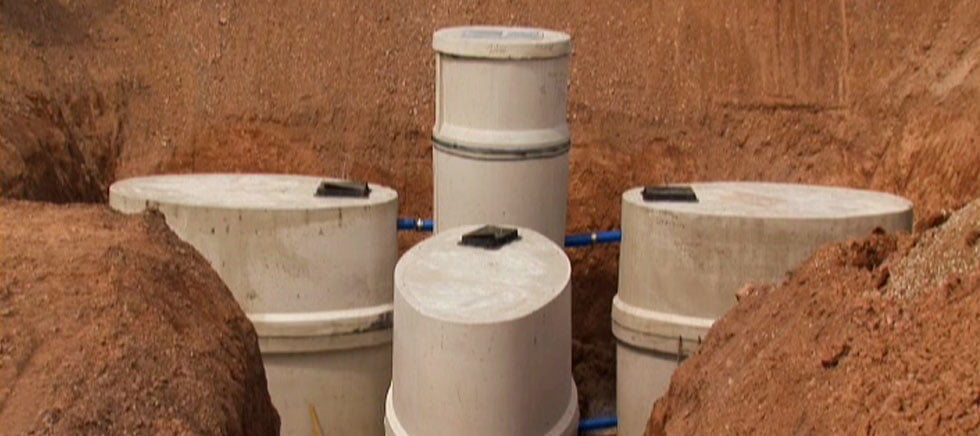If your home does not have access to the mains sewage system, then you more than likely have to have a septic tank system in place to act as your sewage treatment system specifically for your home. A basic septic tank system is made up of the septic tank itself, the drain field and the soil. Having said this, a more sophisticated tank, which can be constructed of plastic, fibreglass or concrete, can also feature a pump chamber and an overflow tank. If you are installing a septic tank and are looking at your options, you need to know what these features are.
Septic Tank
Before we jump into explaining pump chambers and over flow tanks, let us first give you an understanding of what a septic tank does. In simple terms, wastewater enters the septic tank through the pipelines leading from your home. Once in the tank, the system begins to separate the waste by sinking the solids to the bottom forming the sludge layer and the lighter particles of waste rising to the top forming a level of scum.
Pump Chamber
This is the point at which the pump chamber comes into play. A pump chamber is installed after the septic tank and contains an effluent pump, control floats and a high water alarm. The main purpose of the pump chamber is to disperse the effluent when your site has a high water level or if the gradients for drainage are unfavourable. When the effluent in the pump tank rises to a level determined by a control float, the pump activates and pumps the effluent until it reaches a level that switches the pump off.
Overflow Tank
If the control float fails to activate the pump and the level within the tank rises too high, an audible alarm will sound (which is generally located inside your home). At this point, any further effluent that enters the pump tank is moved into the overflow tank, which is an additional storage space. This gives you the opportunity to address the issue before it backs up into your home.
What happens then?
Once the pump chamber is operating as it should, it pumps the effluent through a layer of gravel before it finally reaches the drain field. The drain field is where the effluent receives its final phase of treatment thanks to the naturally occurring organisms in the soil. For this reason, extensive soil testing is carried out prior to the installation of your septic tank system. Once the effluent reaches the drain field, it is no longer an environmental hazard.
Now that you know a little bit more about septic tanks and how they work, you can make sure that you have the right system installed for your home. If your site conditions are such that you need a more detailed septic tank system, a reputable engineer or engineering company will be able to produce detailed drawings of the types of pump chambers and over flow tanks you need to run an efficient septic tank system.

